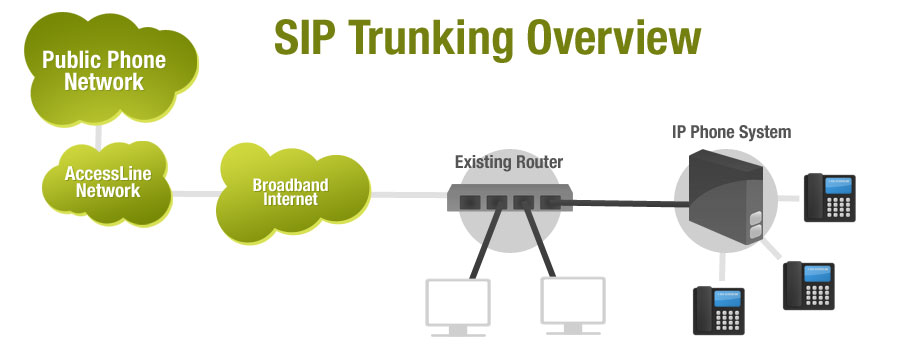SIP Trunking is the latest trend that has gripped the imagination of small business owners for addressing their communication needs. What is it? Does utilizing SIP Trunking make sense for your small business? If you want to implement it, then how should you go about it? This article will try to provide you with some answers.

What is SIP Trunking?
You probably use a Voice Over Internet Protocol (VoIP) for internal communication. With blazing fast internet speeds that is available over your T1 line, maintaining an extensive network of traditional telephone lines just doesn’t make sense, not only because of the cost but also because of the lack of flexibility when it comes to scaling. However, your internal firewall limits your VoIP service to your intranet because of obvious security issues. Wouldn’t it be awesome if there was a secure way by which you could connect your internal VoIP to your Internet Telephony Service Provider (ITSP) without having to make major infrastructure investments like an IP-PSTN gateway? Companies like Amcom provides SIP trunking that will allow you to achieve just that!
Why it makes sense for your small business
You will find lots of articles all over the internet that tries to itemize all the different advantages of using SIP trunking, however the key over-arching theme behind all these purported benefits is that SIP trunking will help you save a boat-load of money from your overhead costs. SIP trunking creates a centralized network that concentrates all the voice data received from all your locations. The system is flexible and will let you keep pace with higher call volumes as your business keeps growing. It also allows you to get rid of redundant phone lines and you can also avoid expensive infrastructure implementations such as an IP-PSTN gateway, all of which leads to your business reducing its operational costs!
How to implement SIP Trunking
This is not a how to guide in terms of implementing SIP Trunking, you will have to let the professionals handle that. However, the purpose of this part of the article is to let you know what to expect when you actually implement this. There are just two decisions you need to make.
- Choose your mediation server: There are two ways to set up your SIP Trunk, either via an IP-PBX provided by your ITSP (not recommended because it is counter-intuitive and not very secure, more on that at a later date) or via a Mediation Server (which I highly recommend). The mediation server encrypts and decrypts all communication via the SIP trunk, thus making them secure. One of the leading names in the space is the Office Communications Server 2007 R2, which is manufactured by Microsoft. I am not receiving a kick-back, but I am still recommending it because the configuration and deployment processes for Office Communications Server is an absolute breeze compared to other services. However, if you believe there is a different product that suits your needs better, then more power to you!
- Choose the type of connection: You can just use the regular T1 line that you use over the office. However, there can be some IP traffic interference when the volume of your business truly explodes. There are a couple of ways you can handle this situation; you can either have your IT team prioritize VoIP communications or you get a separate T1 line just for VoIP communications. Just cross that bridge when you get there!
I believe I was able to convince you that SIP Trunking is the solution for your communication headaches and should be implemented at your earliest convenience!









